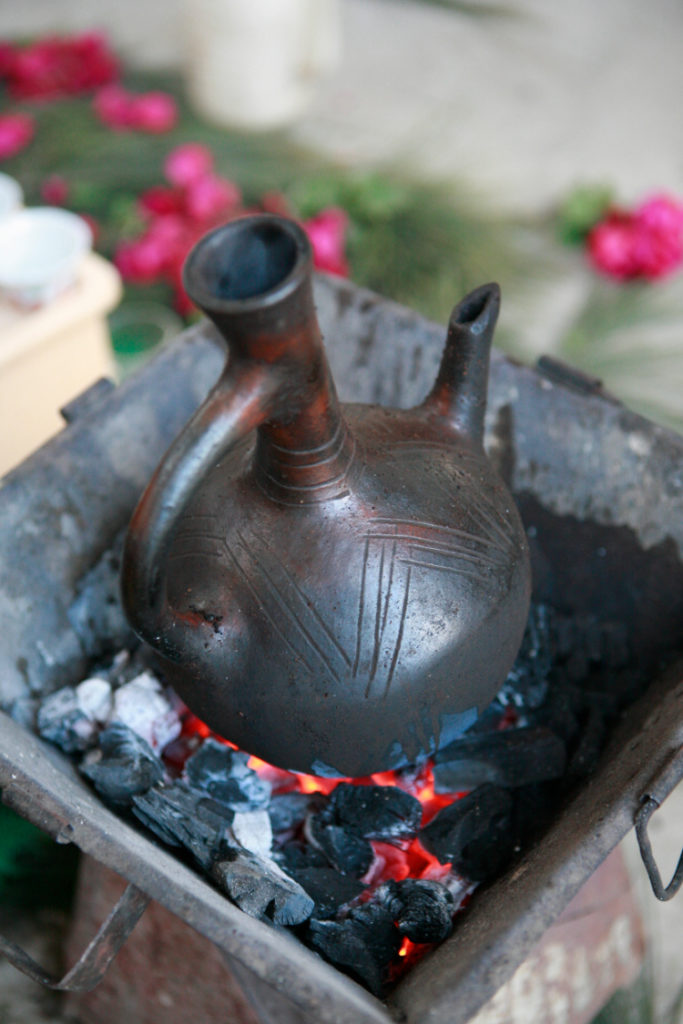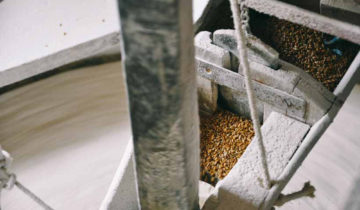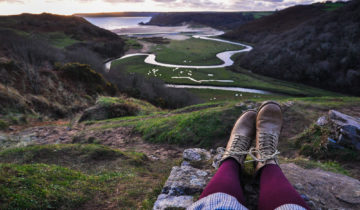Originially featured in British Airways Magazine as The Club’s Guide to Coffee Rituals
By Lani Kingston
Addis Ababa, Ethiopia
It’s said that the birthplace of coffee is in Ethiopia – so it is no wonder that coffee traditions run deep within the culture. Coffee is freshly roasted over a fire by hand, and then brewed in a clay pot called a ‘jebena’. The master of the ceremony deftly brings coffee to a boil over and over, and then the dark, thick and syrupy brew is poured through a horsehair filter into tiny cups. This ritual can be repeated for hours while sharing in conversation. It is the ultimate show of friendship – so coffee ceremonies are often held at home. Chat with anyone on the street in the capital of Addis Ababa, and odds are they will invite you inside for ‘coffee’ – just make sure you have the afternoon to spare, and a high caffeine tolerance.

Turin, Italy
Today, coffee drinkers think mainly of espresso-based beverages; however the steam powered machine that extracts this pure, rich shot has only been around for just over a century. Coffee brewing was a slow process – so in the 19th century, inventors across Europe set to inventing faster machinery. Thus, the espresso was born.
Espresso translates to expressed (pressed-out coffee), but it’s no wonder that many people mis-pronounce this as ‘expresso’ – the small shot of coffee can be prepared quickly and delivers a caffeine hit in one gulp. This development led to Italy’s famous coffee culture – standing-room only espressos served in tiny ceramic cups. Head to Piazza San Carlo in Turin, where the espresso machine was invented. Coffeebars line the streets, but make a beeline for belle epoque Caffe Torino and order a traditional bicerin, made of espresso, milk and chocolate.

Seattle, USA
The epicentre of the US coffee movement is Seattle, Washington: the birthplace of Starbucks, Peets, and a number of other influential roasters. An espresso-based coffee culture, but unlike in Italy, it’s often a sit-down affair. Espresso is paired with milk, flavours, chocolate – you name it – and is served in sizes from 8-16oz. Cafes invite in laptop-toting creatives who use the space as an ‘office’; others meet friends and relax for an hour or two. There’s an on-the-go culture too, but rather than a quick espresso shot gulped down at the bar, these large milk-based drinks are served in take-away cups. Head to Craftworks, who serve a variety of Pacific Northwest speciality roasters, make their own nitrogen infused cold brew, and offer seating in a modern, design-led space.
Ho Chi Minh City, Vietnam
A surprising epicentre of coffee culture, Vietnam’s burgeoning scene is rooted in the 19th century French occupation. Vietnam is now the world’s second largest producer of coffee, so their ingredients are grown right on the doorstep. The introduced European coffee culture adapted to the hot climate – iced espresso served with milk and condensed milk: a ‘Vietnamese Iced Coffee’ (cà phê đá). Stop off at I.D Cafe in Ho Chi Minh City, a tropical hideaway where the house special is made with peanut, whipped cream and chocolate.

London, England
Home to a rich coffee culture since 1652, London’s original coffeehouses were raucous and lively.
Coffee tasted burnt, over-extracted, and was described as ‘syrup of soot’; but over time developed into London’s delicious modern-day speciality coffee scene, now a major player on the world stage. Home to groundbreaking scientists working to preserve the future of the coffee plant; development of innovative technology; world-famous speciality roasters, independent cafes, and barista champions – and an entire festival dedicated to the humble bean. Try the city’s current favourite drink – a flat white – while perched at a converted Victorian urinal (well-cleaned, of course): The Attendant is one of London’s quirkier speciality coffee bars.



